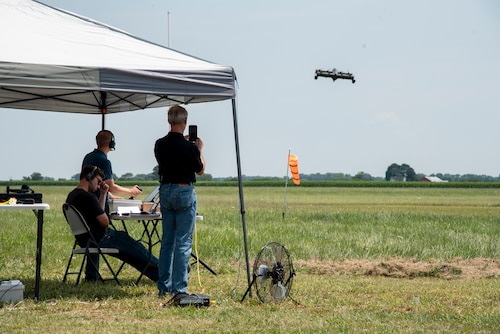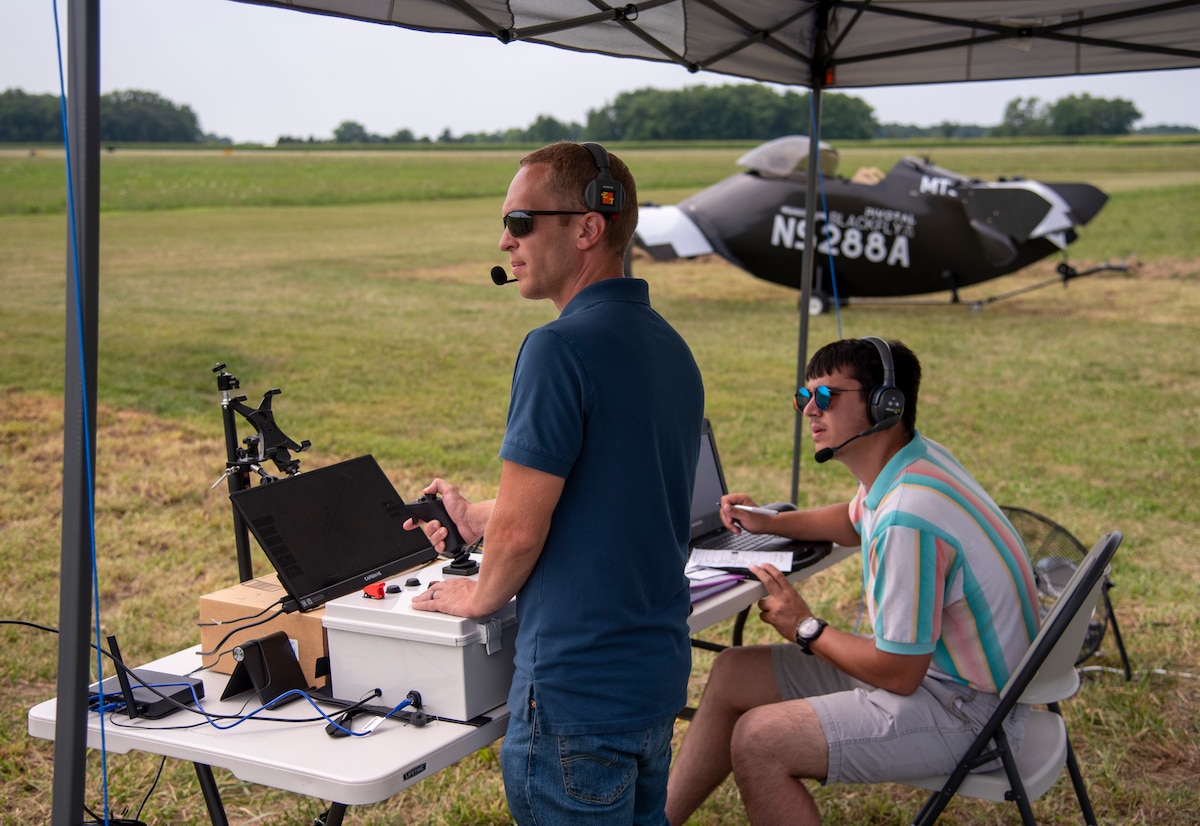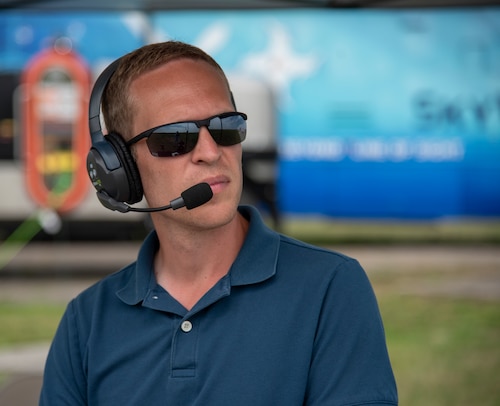As the sun rose over Springfield-Beckley Airport, a quiet hum from an unusual aircraft signaled the start of another day of flight testing.
Since mid-June, experts from AFWERX, the Department of the Air Force's innovation arm within the Air Force Research Laboratory, have been working with Beavercreek, Ohio-based defense contractor Modern Technology Solutions Inc., or MTSI, to evaluate Pivotal's BlackFly electric vertical take-off and landing, or eVTOL, aircraft, along with other electric aircraft. This effort is part of the AFWERX Agility Prime program, which focuses on assessing the aircraft and their supporting ecosystem through an operational leasing initiative.
"We're not just interested in the aircraft's flying capabilities," said Josh Lane, AFWERX flight test engineer. "We're also looking at the infrastructure, including electric charging systems like the DANNAR battery energy storage system and the portable chargers provided by the original equipment manufacturers. We are assessing the overall flight operations in the context of Air Force and other stakeholder concepts of employment."
AFWERX's mission is to accelerate innovative and emerging technologies toward capabilities that can be transitioned to the warfighter. The Agility Prime program focuses on transformative vertical lift technologies, such as the BlackFly, which explores different electric and hybrid vehicles for various mission sets.
These sleek, single seat eVTOL aircraft, normally piloted by a person, are being tested in an unmanned configuration to better assess their capabilities and potential military applications.
"We're exploring a range of military-type use cases, from logistics and material transport to emergency response and intelligence, surveillance and reconnaissance missions," said Jacob Wilson, AFWERX Agility Prime acting branch chief. "Our goal is to accelerate the commercial adoption of these innovations, particularly in the U.S., to ensure a strong industrial base of these technologies and transition the most suitable among them to the warfighter."
The morning of testing began with preparing the equipment in a hangar at the National Advanced Air Mobility Center of Excellence, or NAAMCE. The NAAMCE opened Sept. 18, 2023, to advance the development and integration of advanced air mobility technologies and holds a certificate of authorization for unmanned flight operations, enabling extensive testing of airspace integration and potential policy development for both piloted and remotely piloted aircraft.
The team hooked up a BlackFly aircraft to the back of a pickup truck, grabbed the remote control for the DANNAR and then headed out to the flightline. DANNAR is also an AFWERX partner, and its remote-controlled Mobile Power Station can provide up to a half-megawatt of energy storage in its high-capacity lithium-ion battery packs. The four-wheel drive and multi-mode steering capabilities enhance its usability in austere environments.
"The DANNAR system is designed to provide modularity and flexibility," Lane said. "We use it for various power aspects, including ground control computers and aircraft recharging. Today, we have two 120-volt outlets supporting our flight operations and a 240-volt outlet for charging aircraft."
After setting up the ground control station on the flightline, the remote pilot in command is ready for takeoff. The BlackFly's eight propulsion motors, four on each wing, start to hum softly, gradually increasing in pitch as the rotors spin faster. Its unique V-shaped tail and streamlined fuselage looks like a futuristic craft straight out of a science fiction movie.
The vertical takeoff requires minimal space, demonstrating the BlackFly's capability to operate in confined areas, unlike traditional aircraft. The remote pilot then shifts the control input, and the BlackFly starts transitioning from vertical ascent to forward flight. The rotors gradually tilt, propelling the aircraft forward while still climbing.
Joshua Bohun, Sinclair College associate director for advanced air mobility training and the remote pilot in command, explained the flight profile which focused on an ISR use case. Sinclair is subcontracted by MTSI in support of the BlackFly evaluation.
"We fly out to a specific location, get eyes on a target, perform orbits around it and then return," he said.
While manually flying the aircraft, Bohun monitored the aircraft's systems, including battery levels and motor temperatures to ensure safe operations.
"It's really easy to fly," he added, noting that the aircraft's advanced control systems simplify many aspects of traditional piloting.
The ground control station operator sits next to Bohun and assists by recording detailed notes on every phase of the flight. This data is crucial for analyzing the performance across different configurations and mission profiles.
"We have a very structured approach to gather data for all vendors in the Agility Prime portfolio," Lane adds.
After completing its 20-minute test flight, the aircraft lands and is plugged into the DANNAR for charging. The team also collects the data on how long it takes to charge and then prepares for a second test flight.
The team operates daily, aiming to maximize flight tests. With six BlackFly's available, they can swap out aircraft if any issues arise, ensuring continuous testing and data collection. The MTSI team has also evaluated the BETA ALIA, Pyka Pelican Cargo and Pipistrel Velis Electro electric aircraft as a part of the operational leasing effort.
The flight operation is scheduled to continue until mid-September and will provide a comprehensive report on the various aircraft's performance and potential for government acquisition.












